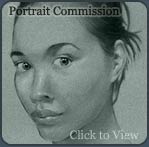Movement and Direction |
|||||||||||||||||||||
|
Page 04 / 07
Horse ArtIf it is the representation of movement that the artist attempts, his task at first sight appears similar to the summing-up of an air in music in a single chord. This comparison is hardly fair, however, for the eye of the spectator who is looking at a work of art does not embrace the whole at once, staring fixedly at one central point, but travels about its surface, so that the artist has a considerable area at his disposal over which he can lead the spectator's eye in such a manner as to produce the desired effect upon him. The quotation from Rodin, given further on, in which he explains how the eye is led across his statue is a good instance of this principle. 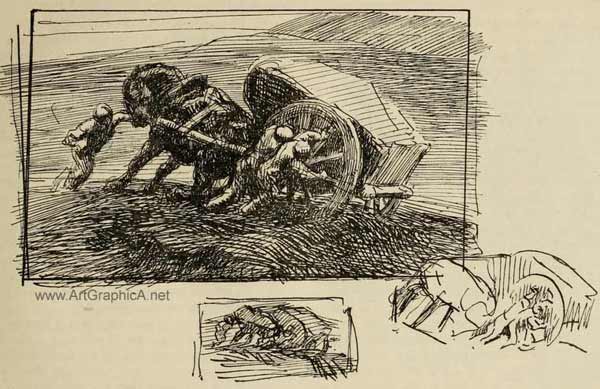
Movement is primarily perceived as direction. Picture to yourself a wet day, and instinctively you will represent the falling rain as making lines across the landscape. In an instantaneous photograph of such a scene the foreground raindrops, if sufficiently distinct, would be shown as separate drops dotted about upon it. Which is the more satisfactory representation ? Which gives the " truth " ? Which brings about in the mind of the spectator the necessary optical condition ? The answer is without doubt : and it is an answer endorsed by the cinematograph, which would be unable to show us movement if it did not restore such generalized impressions which are not to be found in its separate photographs. 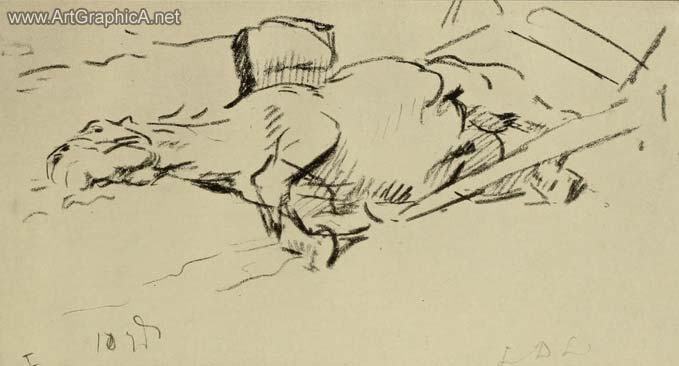 FALLEN. Horse art, drawing. The lines of falling rain illustrate a principle that affects all our perception of movement. If we return for a moment to the definition of our perception of movement as a perception of change -- of change of position (change of shape is merely change of position of component parts) -- we shall agree, I think, that there can be no impression of movement which does not imply a perception of its direction. And direction can be best expressed diagrammatically by a line or lines. What, in fact, are the lines of falling rain but nature's diagrams, the paths of the raindrops traced by faint images of themselves ? 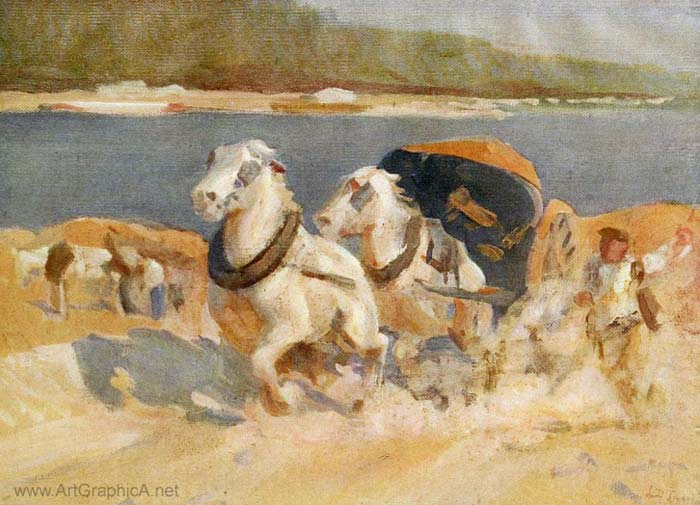 CHARGING THE SLOPE. Horse art, painting. But there is something more involved than mere movement and direction. Whatever instances we take -- the curves of a swallow's flight, the appearance of a circle created by a thing whirled rapidly about a centre, the undulations of the coursing greyhound, the movements of a group of dancers, the effort of a cart-horse--we find in each of them the same principle, that all movement is not only perceived more or less distinctly by its lines of direction, but also nearly always gives rise to rhythm. Consequently if the artist is to create in the mind of the observer the desired optical condition he must succeed in reviving and conveying to him his impressions of the original rhythm. Throughout all art it is to be observed that motion is in fact expressed in this way, through the designing of patterns such that the eye of the spectator will travel across them slowly or rapidly, regularly or variably, continuously or interruptedly, as the artist intends, and as he feels the expression of the particular effect or emotion requires. 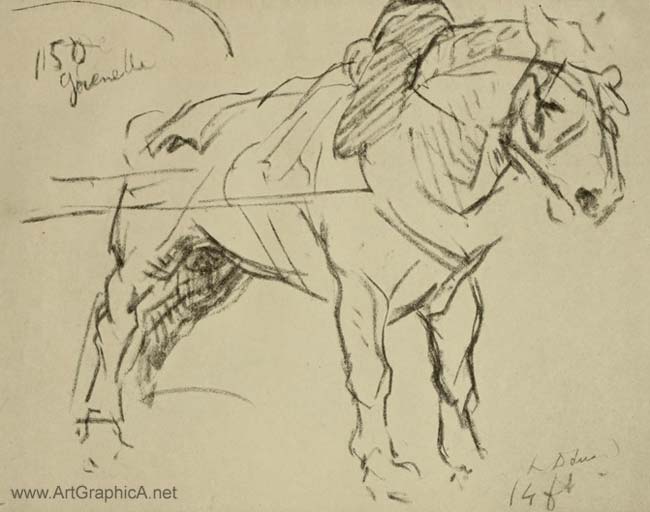 BLOWN. Horse art, drawing. Such patterns can be so irregular and so interrupted that it may seem hardly fair to call them rhythmic. But I think we may again turn to music for comparison. For in music the movement of a piece may also be so- irregular and interrupted that the word rhythmic is hardly to be applied to it. Yet in both cases if there is not to be a complete disconnexion of parts, there must be a sense of continuity which carries across the interruptions and re-establishes the rhythmic principle. 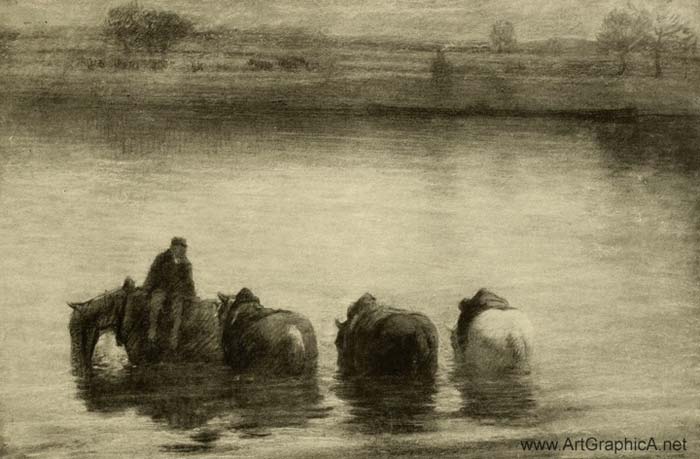 AT WATER: UP THE SEINE. Horse art, drawing. The comparison may be challenged on the grounds that the rhythm of music occurs in time, which it may be said does not find a place in looking at a work of art, of which the whole is seen simultaneously. Such an argument is based on a misunderstanding of how pictures and statues are really seen. Even a general impression of a picture is only received by a survey, however rapid. And really to see and grasp all that is in a great picture is a task equivalent to grasping all that there is in a great play. The mere act of running the eye along any of the innumerable paths of a picture involves an expenditure of time, however brief, which shows that the sense of rhythm conveyed by works of art is as truly dependent upon time as is the rhythm of a piece of music. Motion which does not give rise to rhythmic impressions seems to be beyond the essential powers of art to express, and the occurrence of such motion can only be suggested by the representation of certain phenomena from which it can be deduced by a process of reasoning. A railway train at speed shows no. changes of shape, and creates no rhythmic impressions, thus giving to the artist no means of appealing to the spectator's natural response to rhythmic suggestion. He may blur the spokes, and from such an indication the spectator may reason that the train is in motion ; but he does not feel it. Allow the artist, however, to build a pattern about it, of trailing steam, flapping window blind, and whirling paper picked up from the track, or still less connected with the train's motion let him throw a rhythmic pattern of tree-shadows upon train and embankment, and he can produce a feeling of swift movement in the picture, despite the train's own inexpressive rigidity. 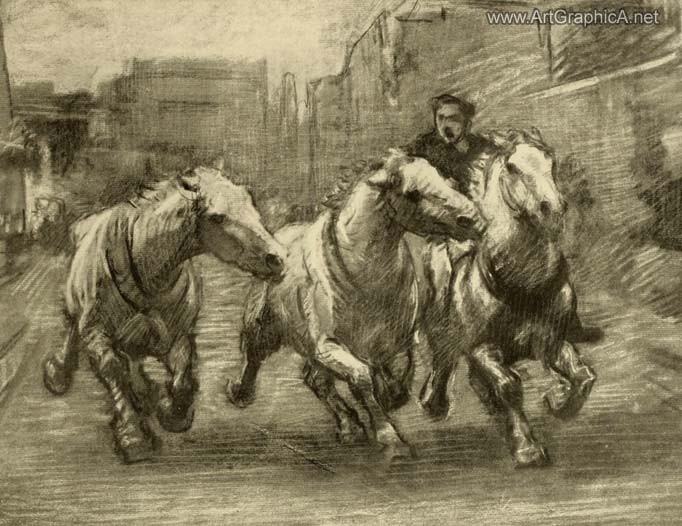 TROTTING: PARIS BUS TEAM. Horse art, drawing. The representation of phases and phenomena associated with our perception of movement in nature such, for instance, as indistinctness, confusion, apparent deformation, though it may intensify and complete the effect created by the fundamental rhythms, is always subordinate to them. For while a mere pattern dissociated from all idea of nature, and all representation of objects, can produce an effect of motion to the eye, a figure represented in a picture, however clearly it is shown to be in action, will produce no such effect if it does not make a pattern or form part of a pattern which is rhythmic in itself ; and this, as has been already pointed out, the arrested attitude of a figure as recorded by an instantaneous photograph hardly ever does.
Next Page
Prev PagePatterns Rhythm Movement Art and Rhythm
|
|||||||||||||||||||||
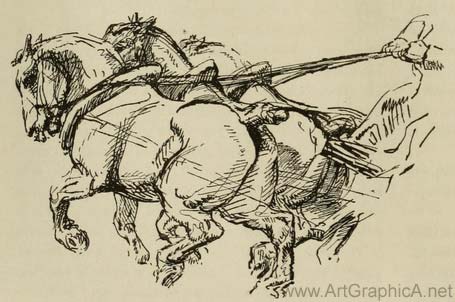 There is a picture by a well-known artist which illustrates the point exactly. The subject is a group of figures dragging a heavy load. Their attitudes, however, combine into a pattern of which the rhythmic flow is backwards in opposition to the intended forward motion. As a result there is created in the mind of anyone who is sensitive to rhythmic design, a strong impression that they are moving backwards, despite their attitudes. One can reason that they should be advancing, one feels the contrary. Such a contradiction makes nonsense and is untrue to what we see, for in nature, where things actually move, it could not possibly occur.
There is a picture by a well-known artist which illustrates the point exactly. The subject is a group of figures dragging a heavy load. Their attitudes, however, combine into a pattern of which the rhythmic flow is backwards in opposition to the intended forward motion. As a result there is created in the mind of anyone who is sensitive to rhythmic design, a strong impression that they are moving backwards, despite their attitudes. One can reason that they should be advancing, one feels the contrary. Such a contradiction makes nonsense and is untrue to what we see, for in nature, where things actually move, it could not possibly occur.







